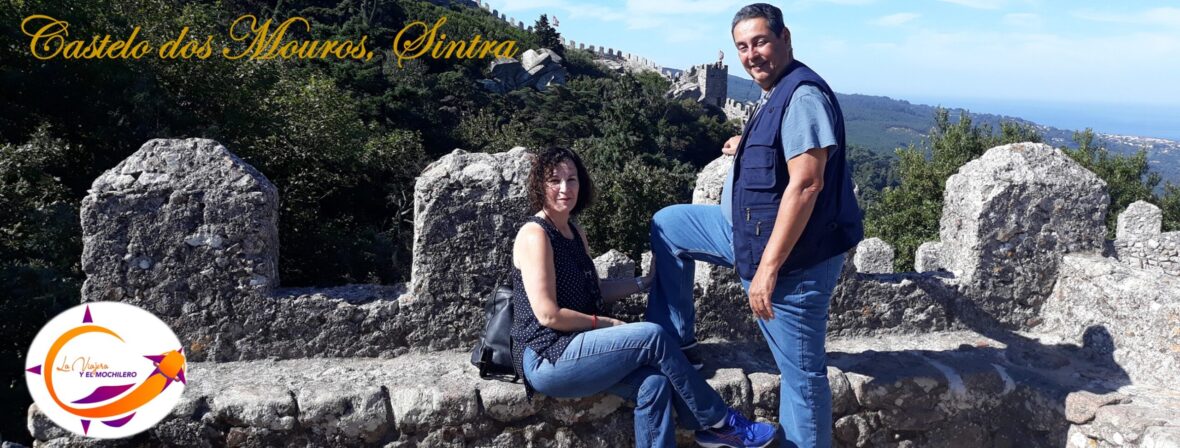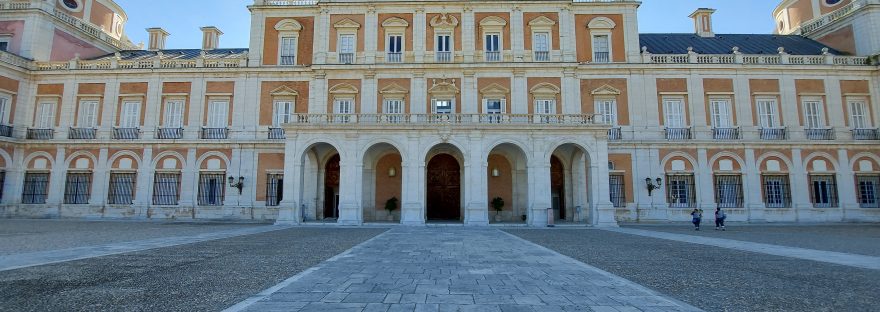When you think of Aranjuez, you have to think big. Only when you arrive and contemplate its Royal Palace, this grandeur is confirmed. And no wonder, it is the country residence preferred by the Spanish Kings, part of the Cultural Landscape of Aranjuez; declared World Heritage by UNESCO in 2001.
The Royal Palace of Aranjuez is located on the Royal Site and Village of Aranjuez, in the Community of Madrid, Spain. Specifically, it is located between the “Avenida del Palacio” and the “Plaza de las Parejas” to the south, a Parterre garden to the east, a estuary to the north and the “Plaza del Raso de la Estrella” to the west.
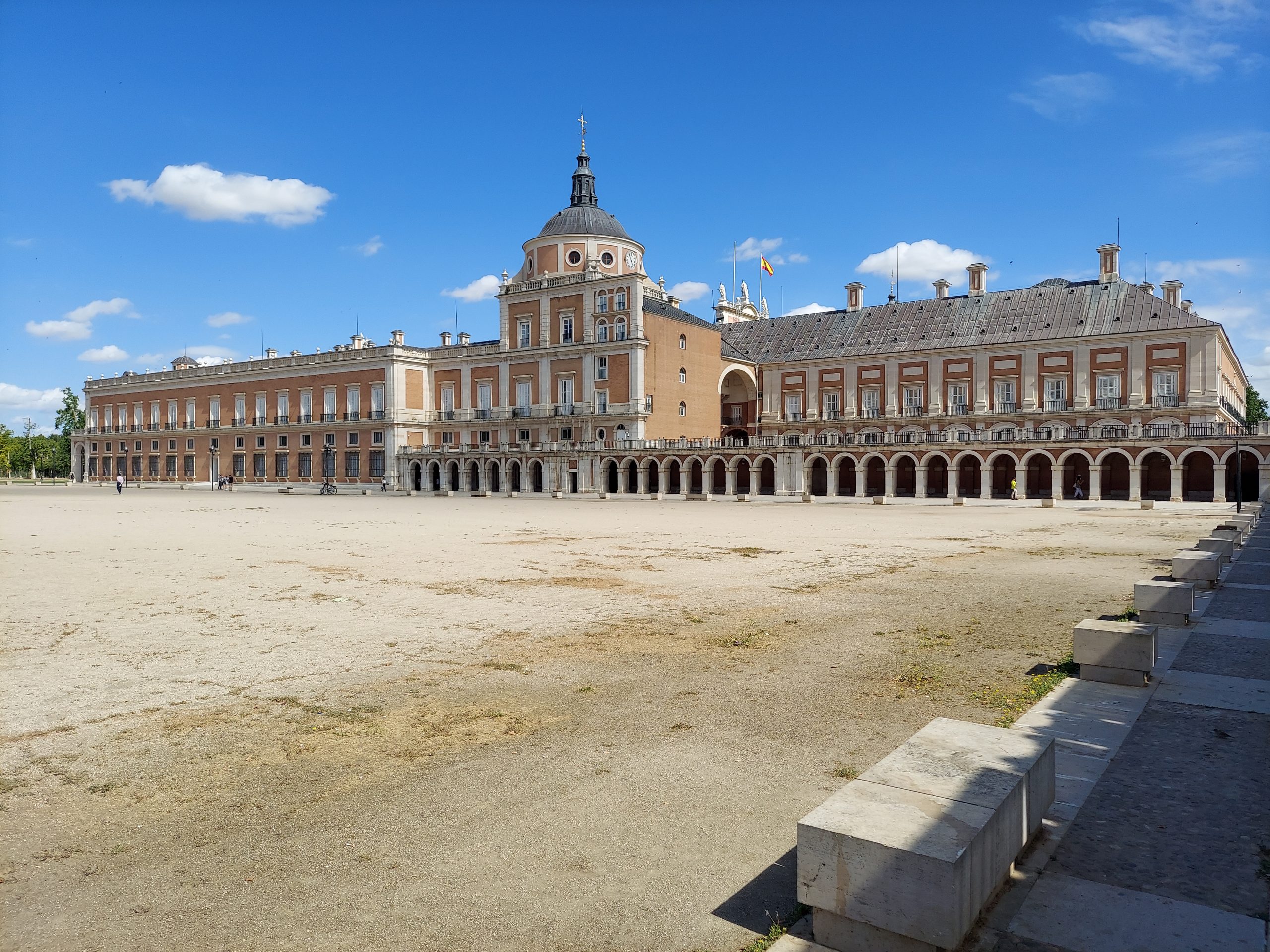
It was ordered built by Philip II on what was once the old palace of the Masters of Santiago. It is the work of the architect Juan Bautista de Toledo, who started it in 1564 and died during its construction. His disciple Juan de Herrera took charge of finishing the work, however, it is said that he only finished half of it.
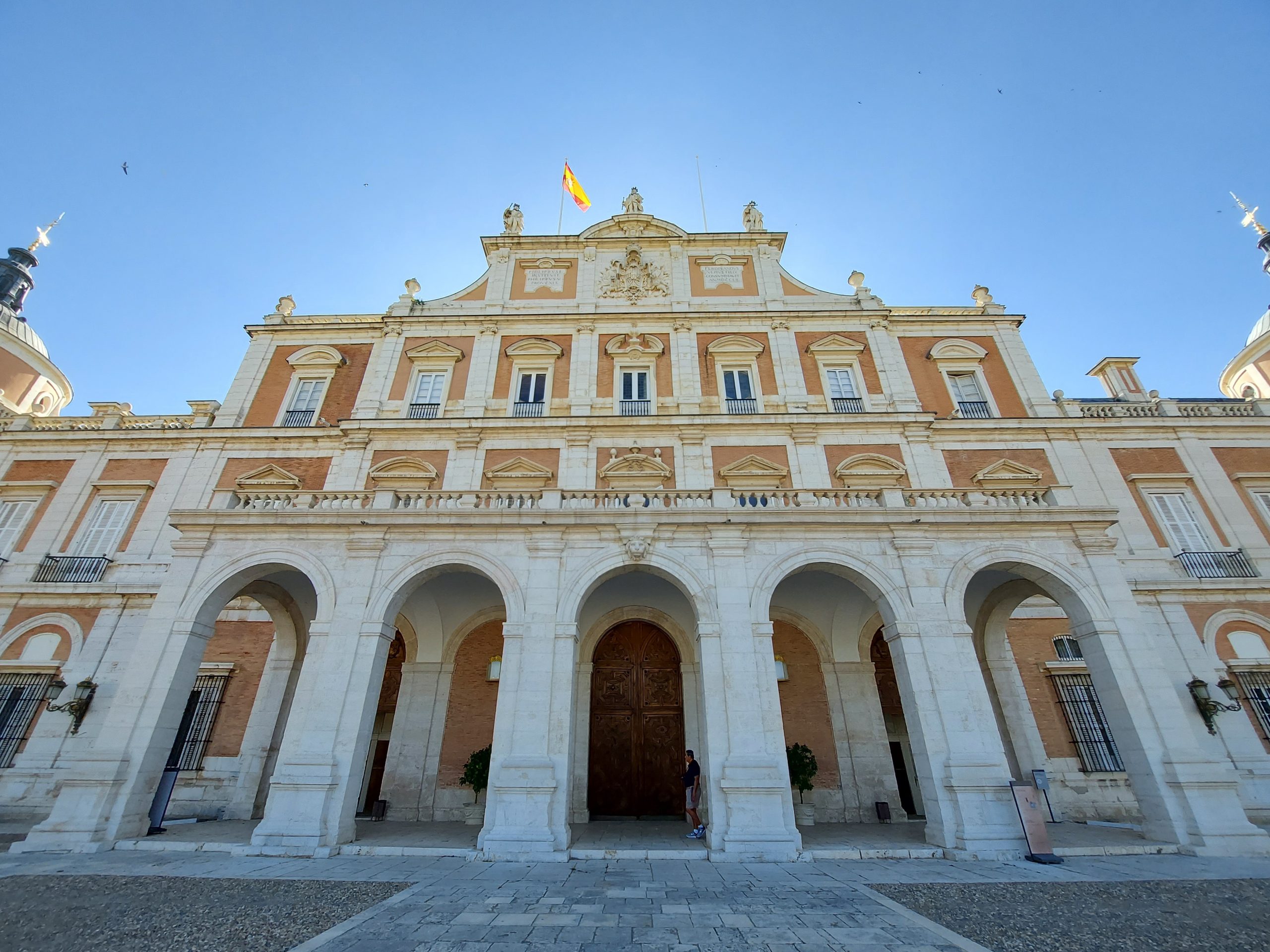
The building is an example of Hapsburg classicism, where white stone and brick are used as the main materials. In 1715, Philip V took up the works to complete the original design; works which were finally complete in 1752 under the rule of Ferdinand VI. The works were completed in the manner that Juan Bautista de Toledo had originally conceived it and took two centuries to complete. The original palace designed was only maintained for twenty years.
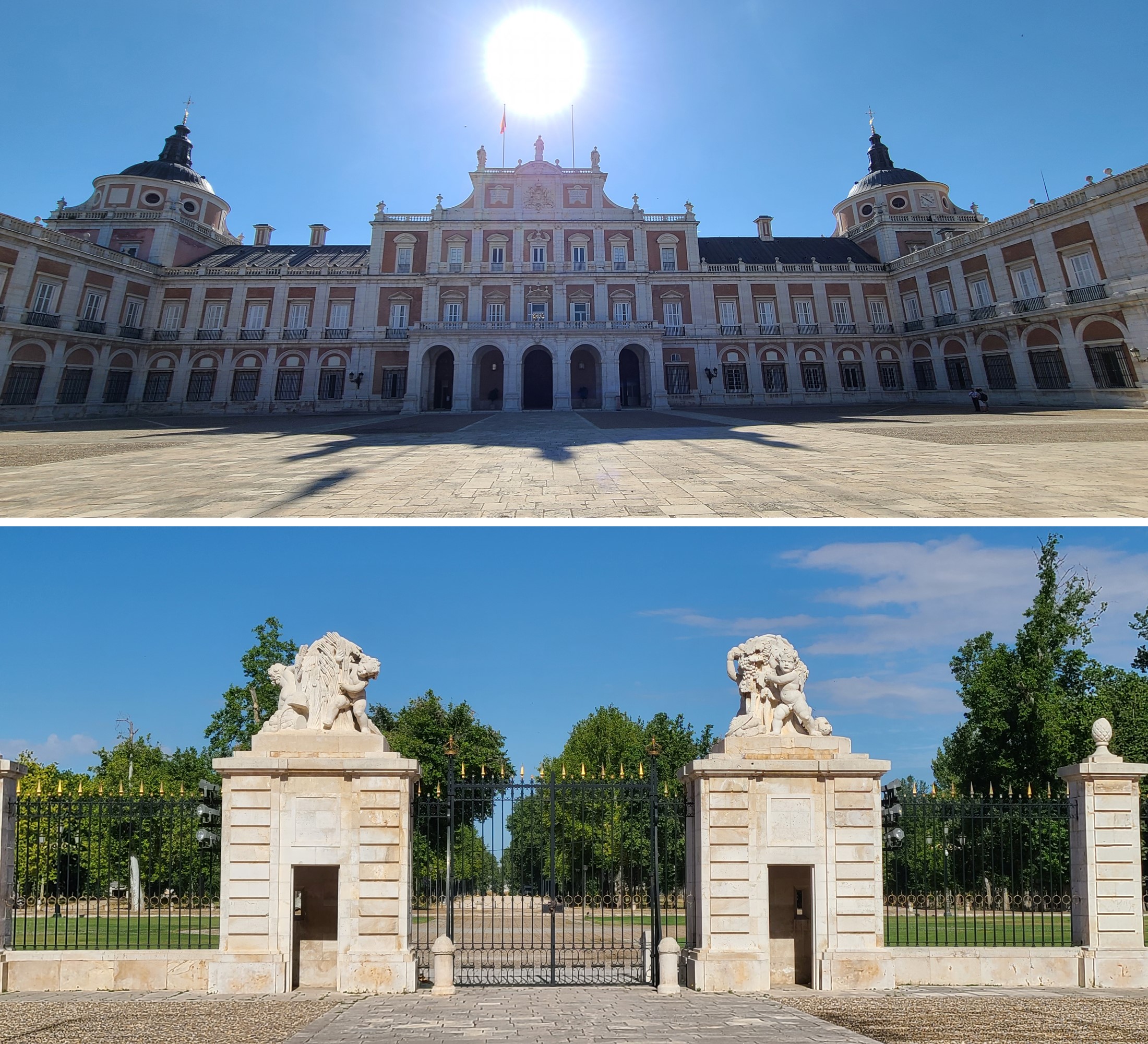
In 1775 Charles III commissioned Francesco Sabatini to enlarge two wings, which gave the Palace its characteristic “U” shape. The Italian also conceived the design of the gate, which was not put in place until 1973. The absence of this barrier could explain the success of the famous Aranjuez riot of 1808, where the people not only achieved the resignation of a hated minister, but also the resignation of a sovereign and the access to the throne of a new king, legitimized by the popular will.
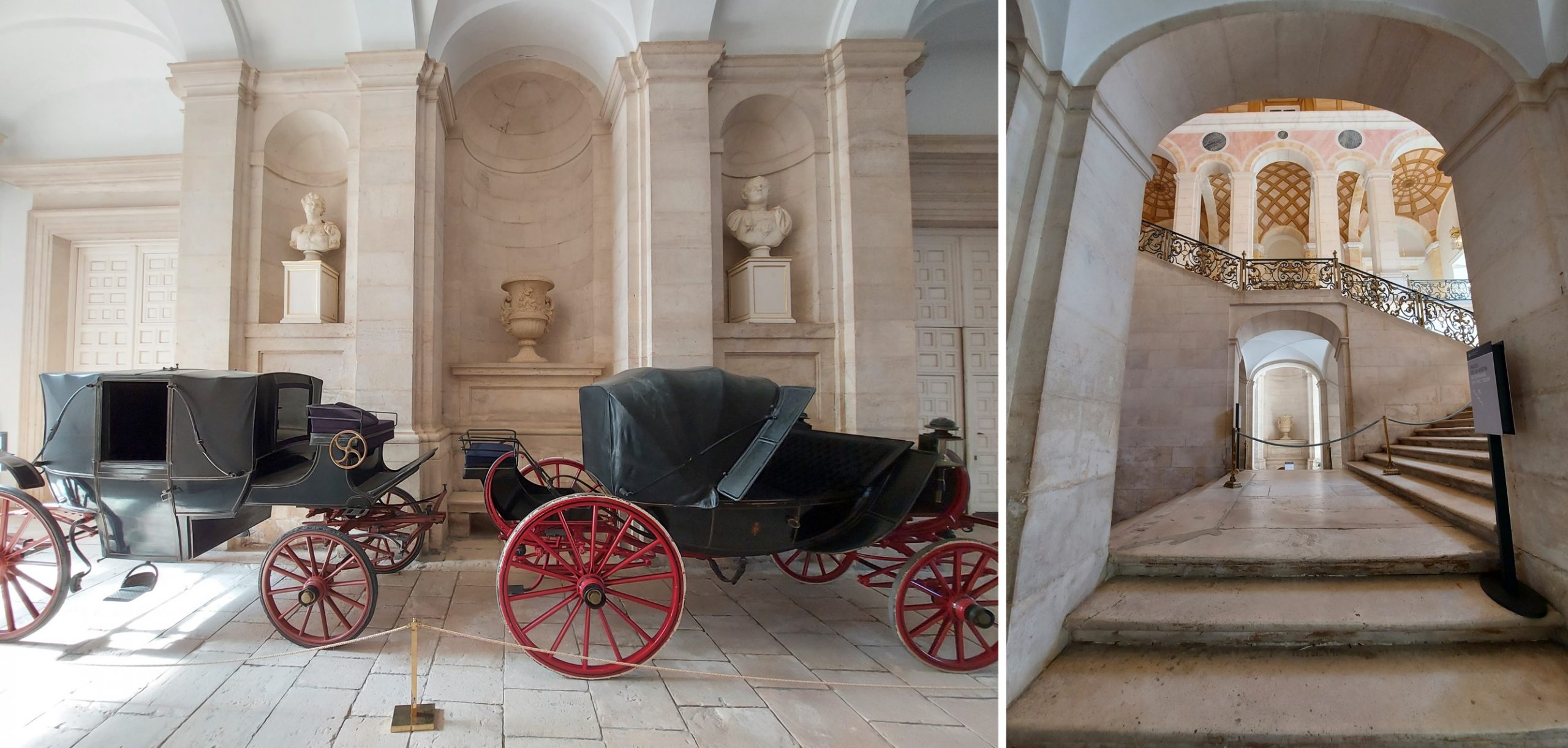
Ordinarily, taking pictures of the interior of the Royal Palace of Aranjuez it is not allowed. It is possible to take pictures of several elements that distinguish the entrance.
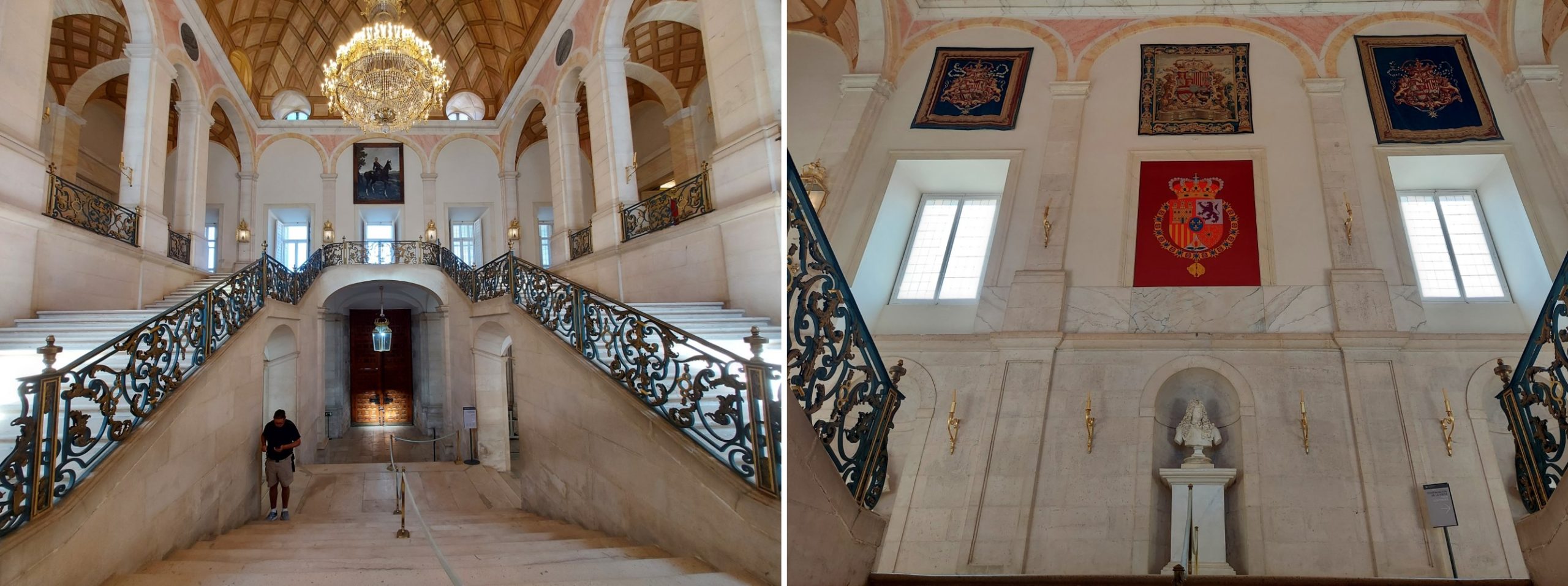
Climbing the stairs, one begins to enjoy the interior splendor of the Royal Palace of Aranjuez. Its exuberant decoration belongs mostly to the Bourbon period. Some spaces that stand out are the Chinese Room, the Porcelain Cabinet and the Hall of Mirrors, among others. In addition, in the Museum of Palace Life, you can see on display the uniform of King Juan Carlos I used on the day of his proclamation in 1975, as well as the dress worn by Queen Sofia that same day. You can also see his wedding dress, as well as those of Queen Letizia, Infanta Elena and Infanta Cristina.
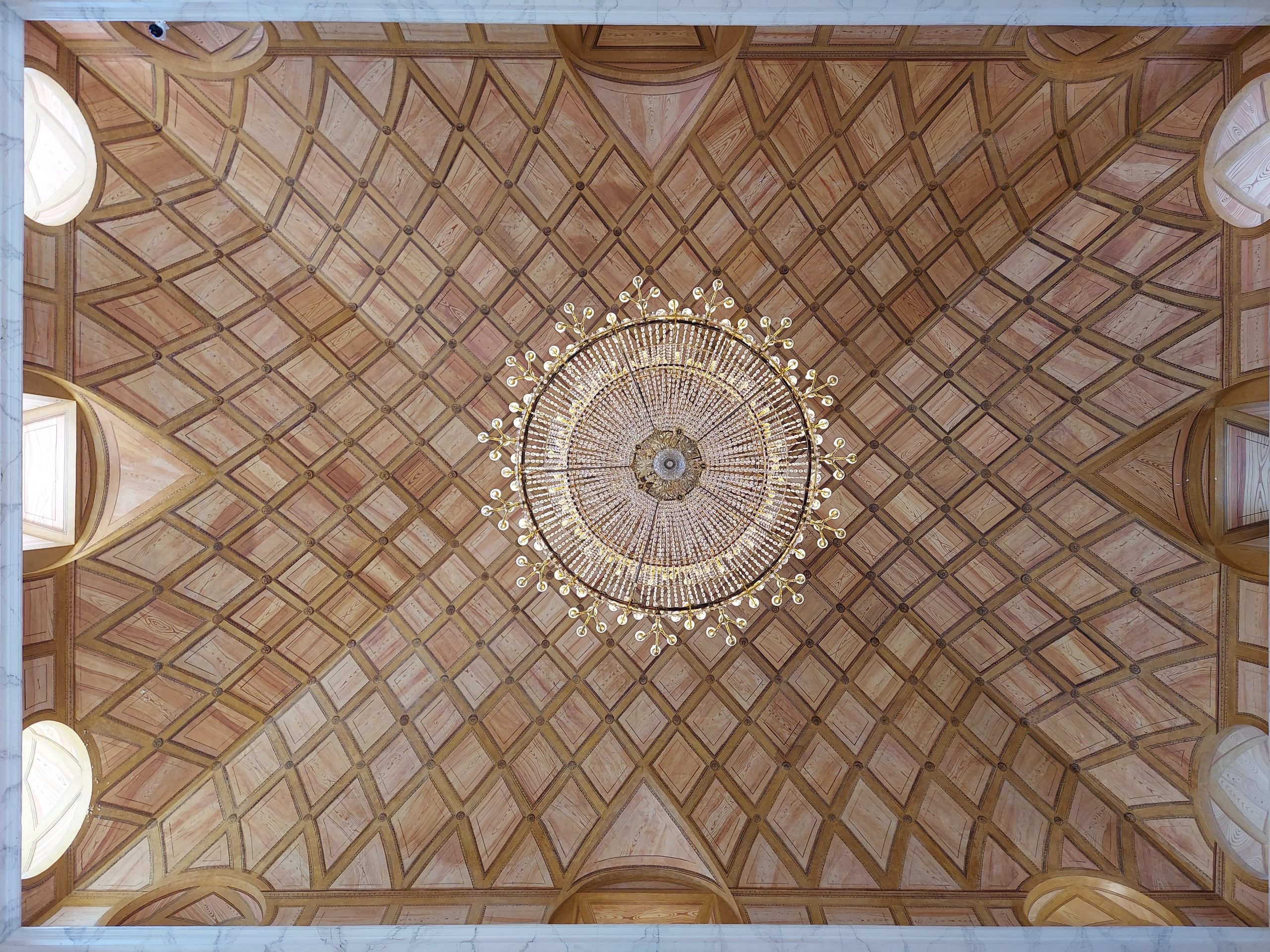
In the second part of this article we will share a bit on “El Parterre“. If visiting the Royal Palace of Aranjuez was quite an experience, visiting these gardens provides a complete perspective of what this great space is all about.
Resources:
https://www.patrimonionacional.es/visita/palacio-real-de-aranjuez
https://es.wikipedia.org/wiki/Palacio_Real_de_Aranjuez
